Palmetto Bluff Real Estate Company Sales Office
Office Hours
Monday-Friday 9am - 5pm
Saturday 9am - 4pm
Sunday 12 - 4pm
Saturday 9am - 4pm
Sunday 12 - 4pm
Just beyond the gates of Palmetto Bluff, at the end of that quiet stretch of trees and sunlight, a solitary strip of pavement beckons. This connective tissue, a tributary, leads off across the great American road. Here are a few of our favorite day trips from Palmetto Bluff. Adventure awaits.
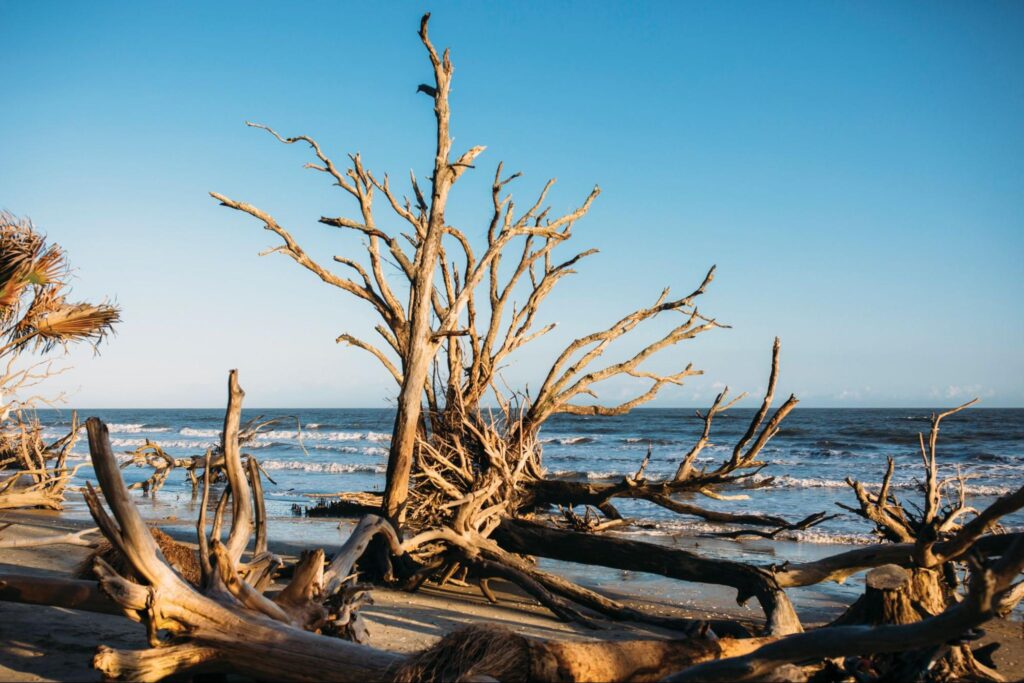
One of the most endearing roads for a classic Lowcountry road trip is Highway 17, the ever-expanding serpentine of asphalt that winds through maritime forests north to Charleston. Pull off that road just as it passes through Osborn, point your hood toward the rising sun, and before long, you’ll find yourself in a place where the Lowcountry’s natural beauty and beguiling history come together.
The story of Botany Bay stretches back to the antebellum South and a pair of cotton plantations by the names of Sea Cloud and Bleak Hall. Among the many coastal plantations that spun a profitable trade in Sea Island cotton, both survived Union occupation and the fallout from Confederate defeat. They could not, however, survive the boll weevil that wiped out Southern cotton in 1917.
Today, their historical memory lives on through ruins and still-standing remains of an old ice house, centerpieces of four thousand acres of beauty. Meandering trails spiral outward through pines and live oaks, concealing deer, egret, and all manner of wildlife. And they end at the breathtaking “boneyard beach” of fallen trees bleached by the sun.
Time your visit right, and you can dine at Picnic Pond, a quiet spot at the edge of the water that once flowed through dikes across the plantation’s fields. Today, it is a serene hideaway for brown ducks and pelicans that flit through the treetops in search of their next meal.

North of Palmetto Bluff lies the storied enclave of Beaufort, a majestic reminder of Southern beauty amid lushly historic surroundings. Soak in the scenery as you pass through, but don’t dawdle too long—this is just the preamble to a journey through supremely gorgeous beachfront natural wonders. Fifteen more miles, and you’re there.
Stepping onto Hunting Island is like wandering back to an era before humankind had placed the shoreline under its dominion. While erosion has carried away some of its beaches, it has left behind a strip of otherworldly beauty where tree roots create elegant architecture among pure white sands.
Here, there are the attractions people tell you about and the ones you have to discover on your own. You can climb to the top of the lighthouse or follow trails around that lighthouse to historic treasures tucked away in the forest. Walk trails between beachfront campsites, or follow them back to hiking paths that offer that rarest amenity in the Lowcountry—challenging changes in elevation.
And while Hunting Island makes for an enticing day trip to a more peaceful age, it may beg further exploration. Bring a tent, reserve one of the rustic camping spots (book early, as they go quickly), and discover how glorious this primordial jungle can be beneath a canopy of stars.

Before Palmetto Bluff rose from a hunting retreat to what it is today, Hilton Head Island was essentially the closest destination. And while it remains one of the top islands in the country (according to Condé Nast Traveler, Travel + Leisure, and anyone from Hilton Head if you ask them), the original quiet charm and natural solitude that made it a gem of the coast gets harder to find.
But if you know where to look, you’ll find those places that led so many to fall in love with the island. And if you’re hungry, the first one you need to find is Hudson’s Seafood House on the Docks. On the island’s north end lies a low-slung building that more or less looks exactly the same as the day it was built by island legend Benny Hudson. Offering the only over-water dining on the island, Hudsons is a place where old Hilton Head still lives.
Just as it was then, Hudson’s is ringed by a mountain of oyster shells, a reminder of the old cannery that once stood on this spot. Inside, it’s a place that perfectly treads the line of no-frills charm, hanging its reputation on the food. Time your visit right, and you’ll get to see your meal come in, with local fishermen pulling right up to the expansive dock with their wares.

As much as we love the freedom of the wide-open road, there are some places it simply can’t take you. One of those is a little island where you’re far more likely to see commuters getting around on a golf cart or by horseback than by car, Daufuskie Island. Different by design, Daufuskie has always operated on its own frequency, one tied to the tides that lull you in and dares you to escape its peaceful embrace.
It’s a honey pot worth getting stuck in, as so many have when they discover the simplicity of an island where everyone is welcome except for the march of modernity.
But it’s more than just spending a day unstuck from the schedule. Take the ferry into Freeport Marina, and your journey will start at the closest thing to a downtown the island has—an open-air bar, live music venue, and restaurant surrounding the Old Daufuskie Crab Company. Tuck into some famous Daufuskie deviled crabs or share drinks with local characters by the water.
From there, the island begs you to explore its rustic expanses of maritime forest. Discover the history and thrill of the ghost stories of the Bloody Point Lighthouse. Wander fields where farmers brought back Sea Island cotton, muscadine grapes, and the agricultural heritage of the Lowcountry. Or simply walk in any direction long enough and discover the breathtaking beauty of a pristine beach.

One of the most remarkable aspects of the Lowcountry and its unique role in American history is the perseverance of the Gullah Geechee culture. Once freed, those who had been enslaved continued the traditions and heritage of their homeland, blending the customs and practices of countless tribes into a people called the Gullah Geechee.
While the language, culture, and customs have much to teach us, the food offers the most delicious insight into how the Gullah Geechee people evolved to survive in the new world. And few can teach that lesson like Bill Green, chef, and owner at The Gullah Grub Restaurant. Right on the side of Highway 21, as it crosses St. Helena Island, this Sea Island mainstay serves authentic Gullah cuisine the same way it’s been enjoyed for centuries.
And with every bite, you gain a greater appreciation for the Gullah people. The red rice sitting beside your fried shrimp-n-shark? A distant cousin to the jollof that fed West Africans and one of the staples that enslaved labor made possible in Southern farming. Those oysters? Pulled out of beds using the same techniques that oystermen used to feed their families in the first days of freedom. And the ribs, perfectly slow-cooked to tender perfection? The same as the ribs at picnics that brought families together after they’d been scattered across the Sea Islands.

Telling that same compelling story of the African American experience, located just down the road from Gullah Grub, is a place that holds a singular place in history.
Penn Center’s roots go back to emancipation when the “Port Royal Experiment” established schools and hospitals and offered land for sale at reduced prices to allow freed people the opportunity to pursue self-governance and self-determination for the first time. Established in 1862, Penn School gave children an education before the Emancipation Proclamation gave them freedom. From there, its reputation as a hub for learning grew among African Americans.
In the 1960s, the Southern Christian Leadership Conference met often at Penn Center, a haven for social justice groups during the Civil Rights Movement. By then, the school had pivoted to more of a cultural center, creating a safe space for Dr. Martin Luther King Jr. to meet with fellow leaders. (It’s said that he wrote part of his famous “I Have a Dream” speech in one of the cabins on site.)
Today, Penn Center is a testament to the compelling story of Black history in America. Where once young children dared to defy cultural norms that had long held them down by gaining an education, today, we can all learn a thing or two. Plan ahead, and you can spend your day with one of the artists in residence, seeing how this experience is shaping young Black artists.
If you really want to get the most out of your day trip, come during November’s Heritage Days, when the cultures of various tribes and peoples from across West and Central Africa take the spotlight.

The history of the Lowcountry stretches back to the first days of discovery in the new world, with Port Royal Sound serving as one of the busiest bodies of water during exploration. It was the French who arrived first, setting foot on American soil here in 1562. By the time St. Helena’s Church was built in 1742, Spanish, Scottish, and English flags had flown above the town of Beaufort.
As one of the oldest continuously active churches in America, the history of St. Helena’s Church mirrors our nation’s history. And nowhere is that history more beautifully written than among the serene tombstones at St. Helena’s Church Cemetery. Tucked away behind its mossy bricks and wrought-iron gates, you’ll find markers that trace history.
Two stones near Church Street mark the final resting places of British officers killed during the Revolutionary War, prompting a colonial captain to say at their funerals, “We have shown the British we can not only best them in battle, but we can give them a Christian burial.” Just off the church’s northeast corner, the low-slung mausoleum of a Dr. Perry (whose first name has been lost to history) contains a jug of wine, a loaf of bread, and a pickax, in case the good doctor be accidentally buried alive.
At every turn, another fascinating story is told through names and dates. Close your eyes, feel the sunlight filtered through the canopy of trees, and you can almost hear America’s history being revealed with every tombstone.
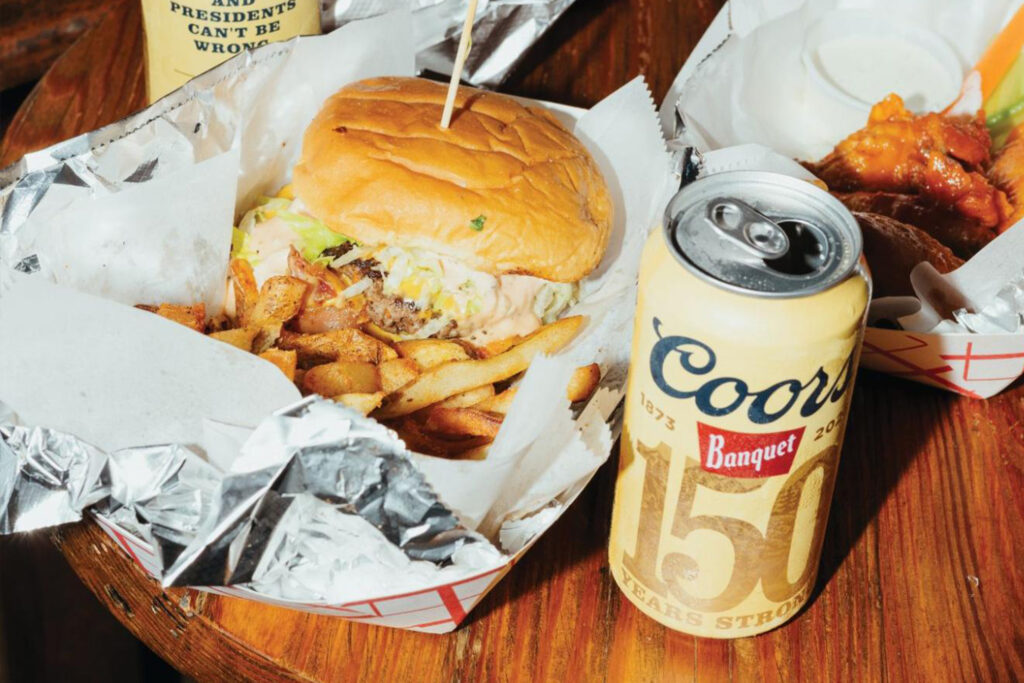
It takes a lot for a concept to seem quirky in Savannah’s Starland District. This is, after all, where the already eclectic town of Savannah flies its freak flag highest, with shipping container parks that host a rotating array of food trucks, tattoo shops, and flea markets that share sidewalks with tarot card psychics and street musicians.
At the heart of this circus of the eccentric, you’ll find the two-headed entertainment creature known as Over Yonder and Moodright’s. Moodright’s came first, offering cold beer, duckpin bowling, and a wood-paneled, stained-glass lamp aesthetic that will take you back to the days of sneaking beers in the basement over a game of pool. After hours, the party moves around to the back of the building, where Over Yonder offers a bill of fare owner David Eduardo once called “well-considered stoner food, or thoughtful fast food with booze,” as well as a massive stage hosting live music and bingo night.
Sit at the bar and soak in the ambiance of carefully curated quirkiness, or take your ice-cold beverages to go, thanks to Savannah’s famously liberal open container laws. You’re just a few blocks away from Forsyth Park, where Savannah flocks on any sunny day to people-watch.

Photography by Summer Pagatpatan Bentley || Chocolate Labrador || Male || 9 Years Old Bentley is always happy to see anyone. He’s the fan favorite in our neighborhood and might bust down the door to see you! Bentley loves to go on a treat walk in Wilson ...

What’s more “summer” than tomatoes from the garden? Or, in Palmetto Bluff’s case–tomatoes from The Farm? We asked our newest addition to the Palmetto Bluff Club’s culinary team, Chef Beth, to share a classic summer staple from her library of recipes: Fattouche...

How did you two meet? Patti: We actually met in college but never dated. We went to Auburn University and both moved to Atlanta after graduation. He was in graduate school at Emory, and I worked as a nurse at Emory’s Children’s Hospital. Pat: Our friend grou...
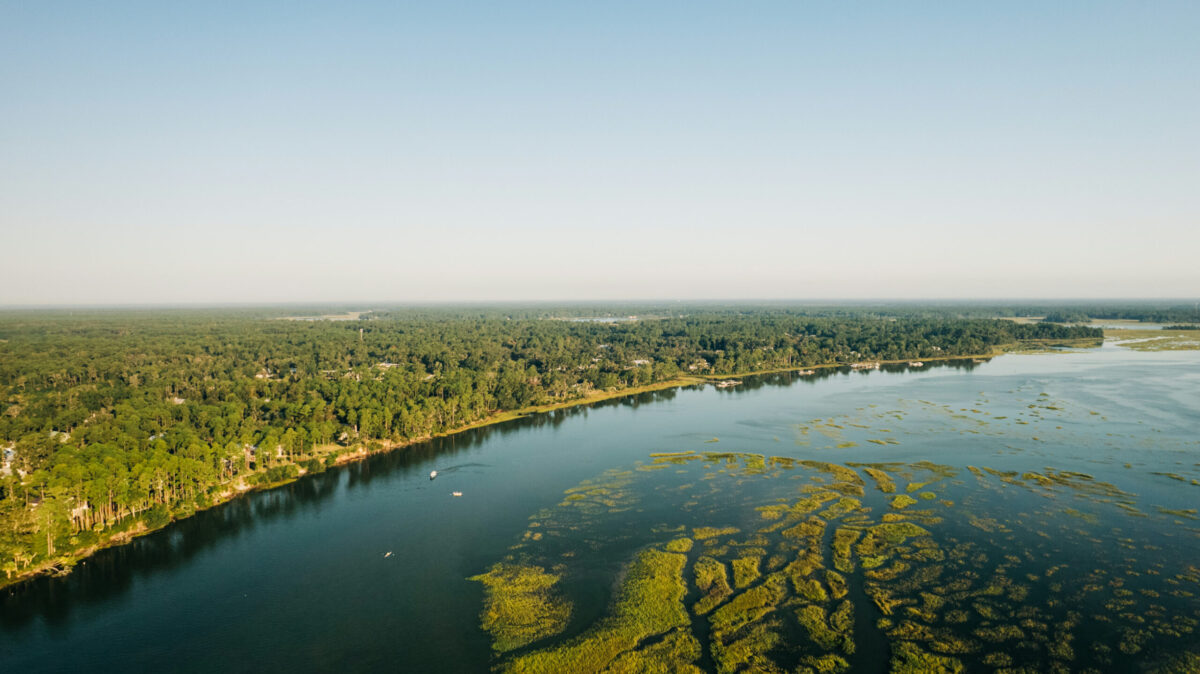
Boat The Bluff: South Carolina Waterways Imagine gliding through serene, glassy waters surrounded by lush marshlands and maritime forests. Welcome to Palmetto Bluff, South Carolina—a paradise for nature enthusiasts, water sports aficionados, and anyone seekin...
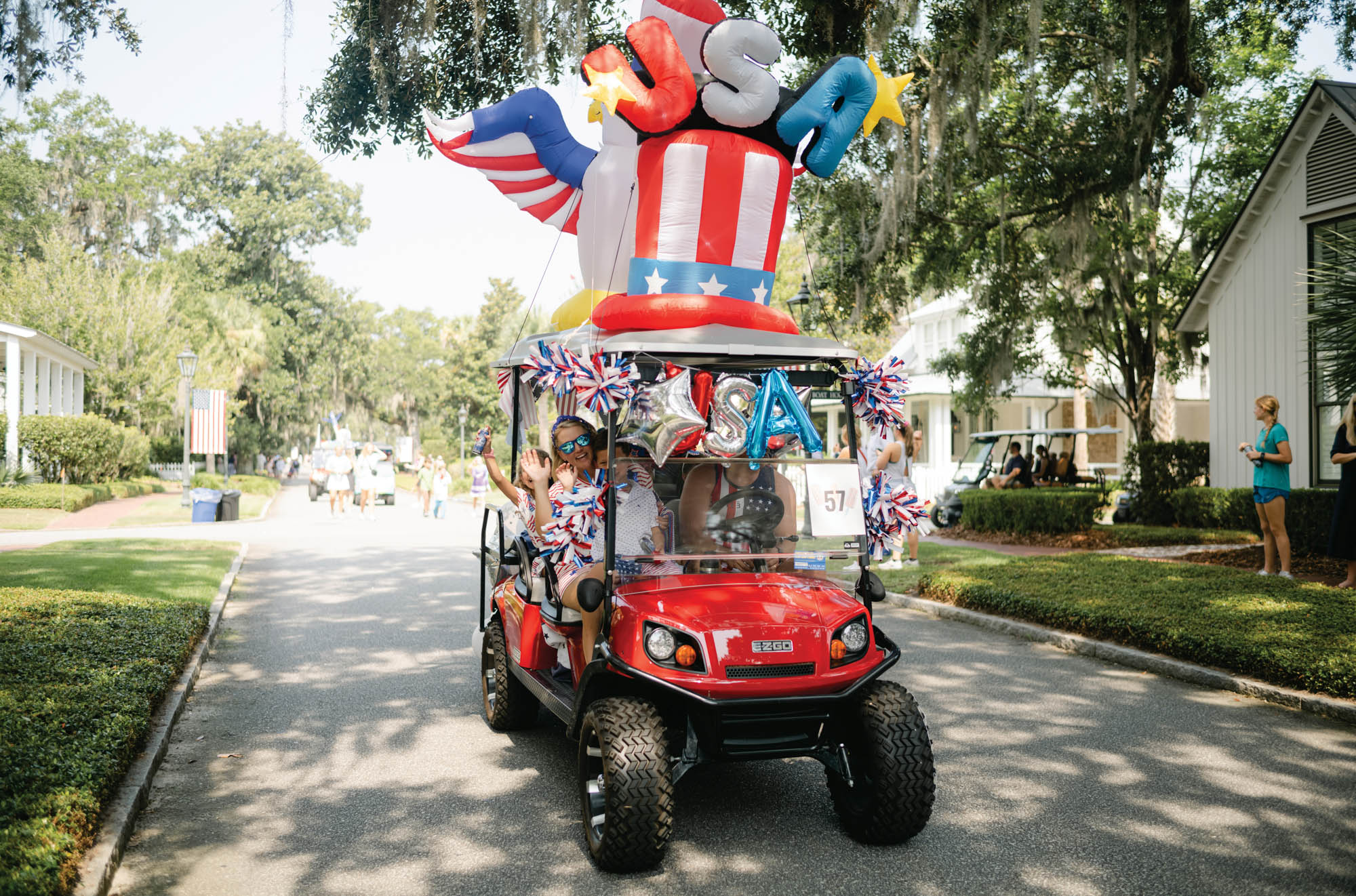
Photography by Charlotte Zacharkiw The fourth of July is the highlight of the Palmetto Bluff calendar. Follow along with the Truslow family on this magical summer day. Neal and Lauren Truslow come to Palmetto Bluff as often as they can. Their kids...
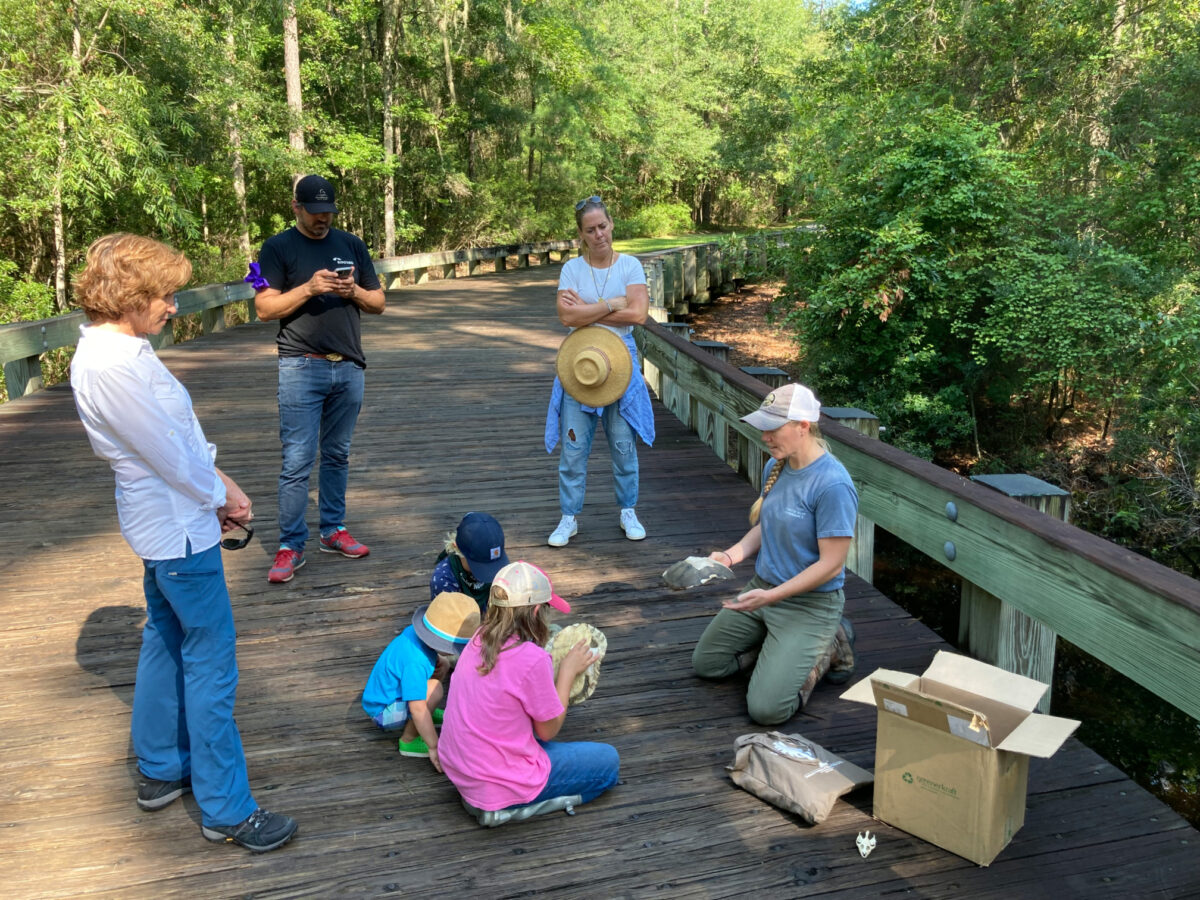
Protecting Nature and History at Palmetto Bluff In the heart of South Carolina's Lowcountry lies Palmetto Bluff, a sanctuary of natural beauty, rich history, and vibrant ecosystems. Since its establishment in 2003, the Palmetto Bluff Conservancy has been dedi...

Photography by Gately Williams Cruise Control Palmetto Bluff lies at the heart of the vast network of rivers and creeks that connect the South Carolina Lowcountry’s barrier islands. A stone’s throw from the notable cultural and historic hubs of Savannah, B...

Tracy’s Journey to Palmetto Bluff Real Estate Situated in the heart of Bluffton, South Carolina, Palmetto Bluff is more than just a community—it's a place of magic and wonder. For Tracy Schyberg, a dedicated sales executive with the Palmetto Bluff Real Estate...
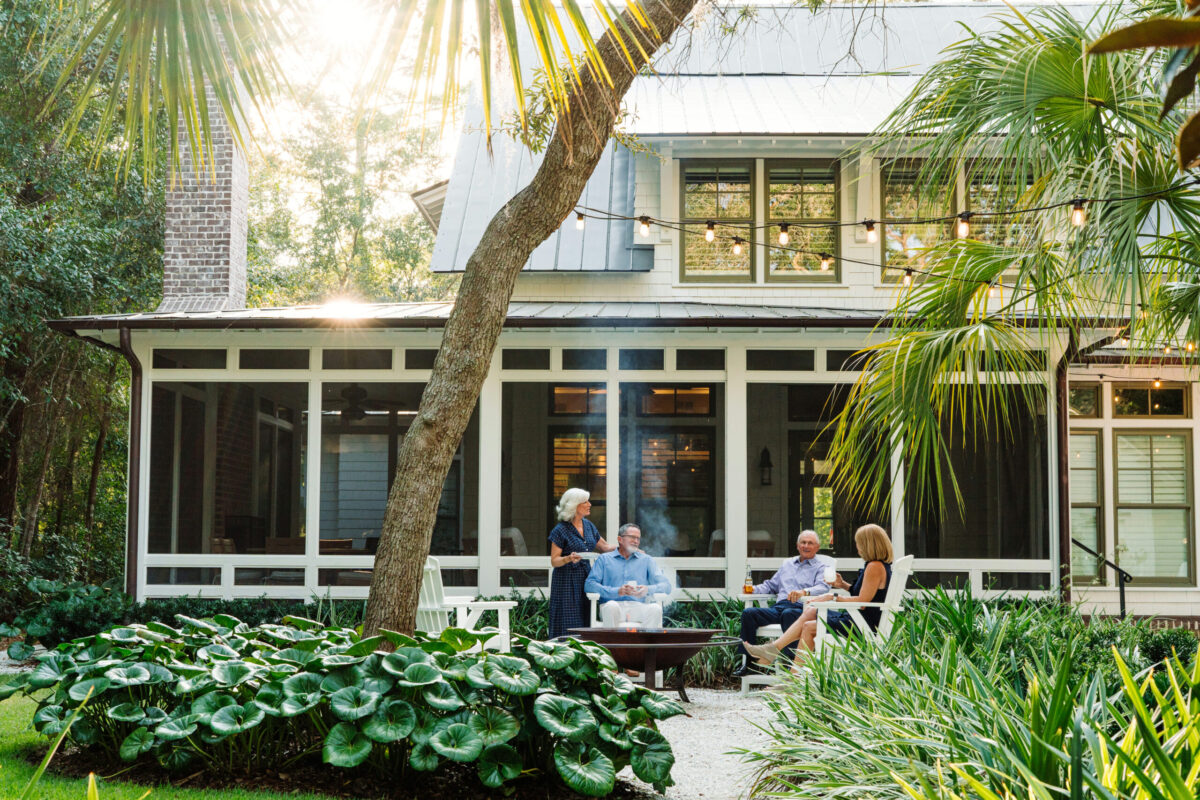
Enhancing Coastal Living With Lowcountry Landscaping Trends The Lowcountry lies along the southeastern coast of the United States, a region known for its breathtaking landscapes, rich history, and unique culture. From the charming streets of Charleston to the...
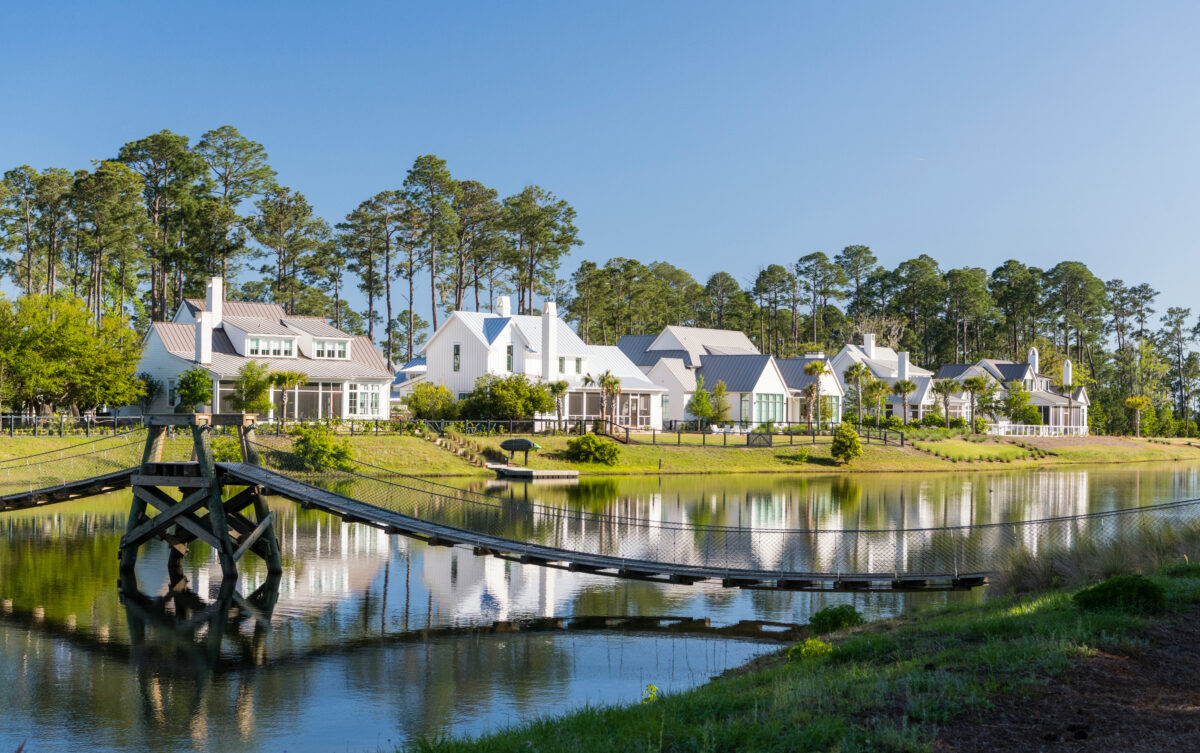
Palmetto Bluff Real Estate Available in Moreland Forest Nestled in the heart of the Lowcountry, Moreland Forest is a charming neighborhood known for its beautiful natural surroundings, Lowcountry architecture, and luxurious amenities. Within the lush forests ...
Learn about the Palmetto Bluff Conservancy and how we keep the vision of our land in place.
On land or water, there is an ever-evolving variety of activities.
We do not attempt to independently verify the currency, completeness, accuracy or authenticity of the data contained herein. All area measurements and calculations are approximate and should be independently verified. Data may be subject to transcription and transmission errors. Accordingly, the data is provided on an “as is” “as available” basis only and may not reflect all real estate activity in the market”. © [2023] REsides, Inc. All rights reserved. Certain information contained herein is derived from information, which is the licensed property of, and copyrighted by, REsides, Inc.